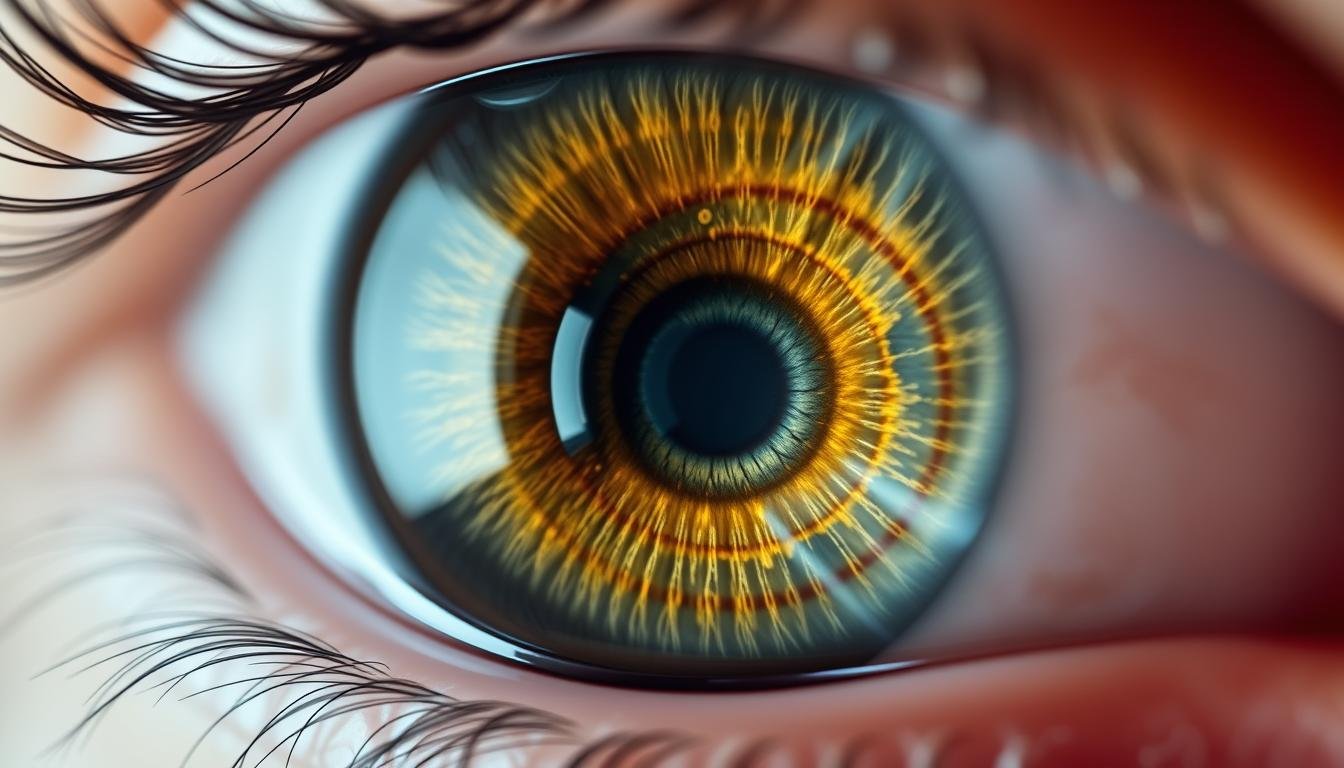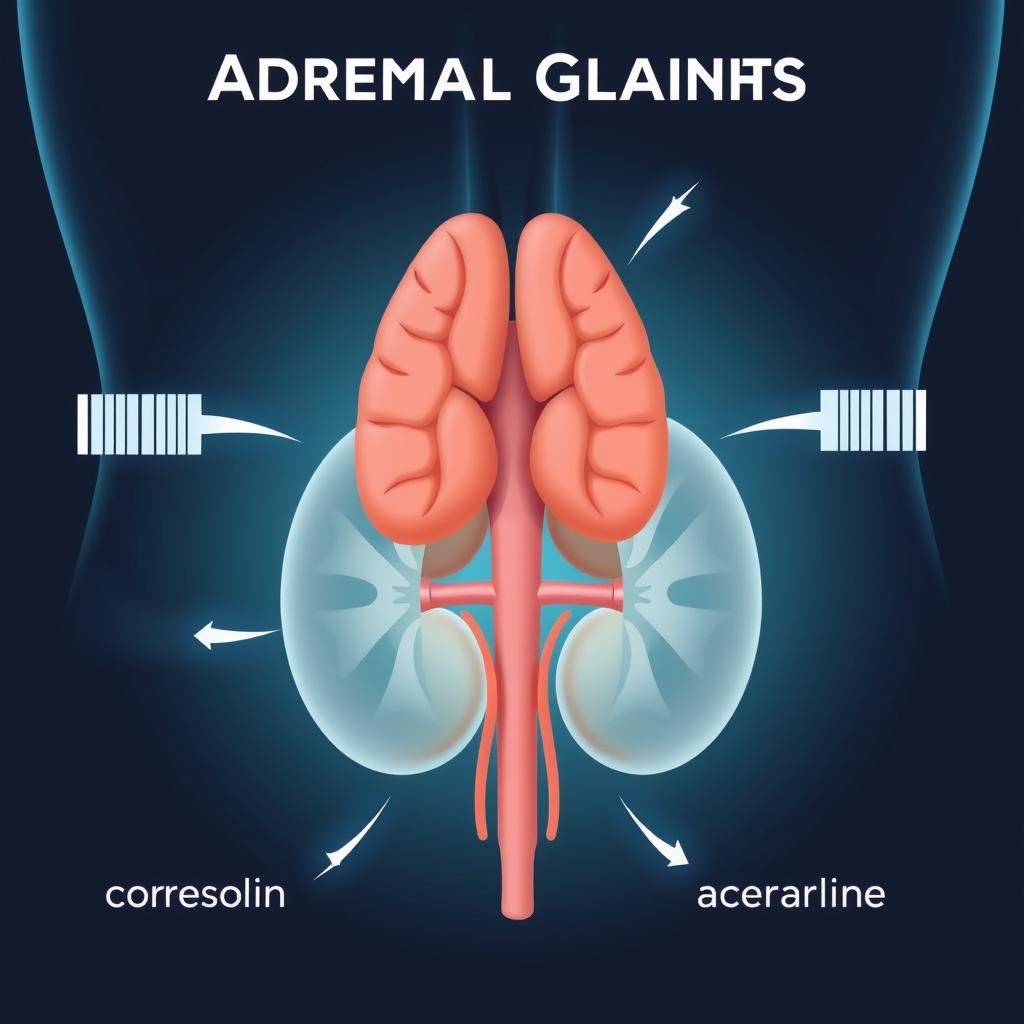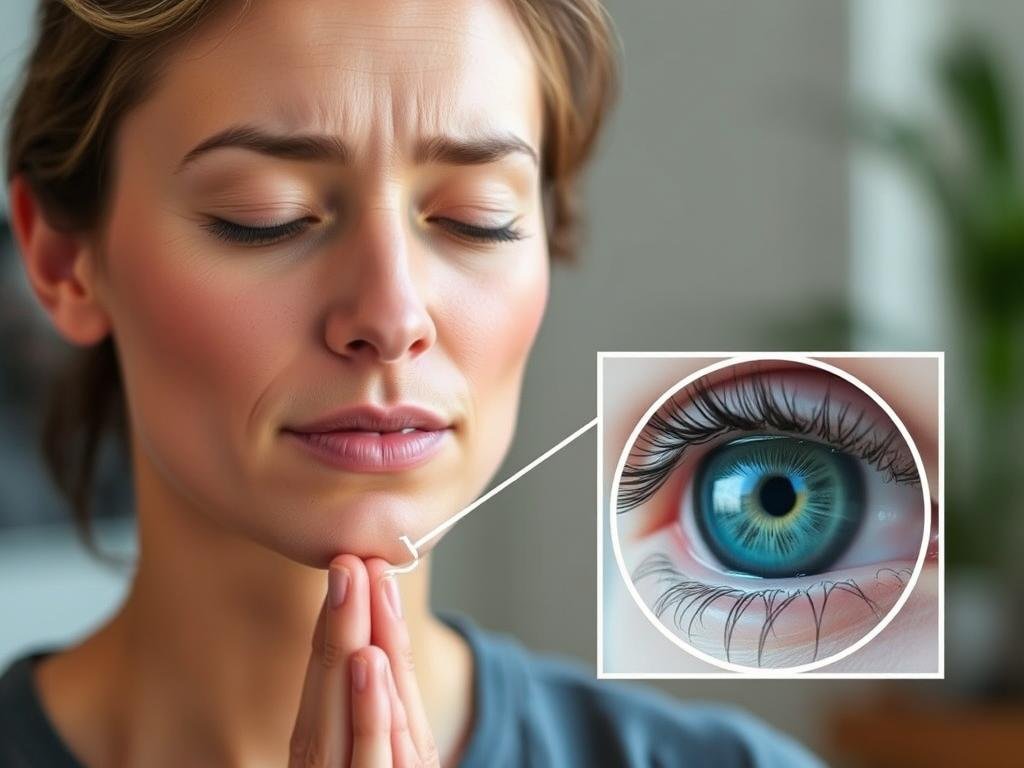The human iris contains intricate patterns that some believe can reveal insights about our health. Among these patterns are Stresul sună în ochi, also known as nerve rings or contraction furrows. These circular formations in the iris have long fascinated practitioners of iridology, who study the iris to assess overall health and potential imbalances. Whether you’re curious about these distinctive eye markings or seeking to understand what they might indicate about your stress levels, this comprehensive guide explores the world of iris analysis and what these rings might signify.

Ce sunt inelele de stres în ochi?
Stress rings, also called nerve rings or contraction furrows in iridology terminology, appear as circular lines or indentations that form around the iris. These rings can vary in number, depth, and prominence depending on the individual. They typically appear as concentric circles that may be complete or partial, creating a pattern similar to ripples in water.
According to iridology practitioners, these rings form due to the contraction of iris fibers in response to prolonged tension in the body. They’re often described as neurovascular cramp rings because they’re believed to reflect a state of neurovascular dysfunction or chronic nervous tension.
The physical appearance of stress rings can vary based on eye color:
- In blue or lighter-colored eyes: Appear as white or lighter-colored rings
- In brown or darker-colored eyes: May appear as darker indentations
- Can be single or multiple rings
- May be complete circles or partial arcs
The formation of these rings is believed to occur gradually over time in response to chronic stress rather than appearing suddenly after a stressful event. Iridologists suggest that the more pronounced and numerous the rings, the greater the level of chronic stress the individual may be experiencing.
The Significance of Stress Rings in Iridology
In the practice of iridology, stress rings are considered significant indicators of a person’s nervous system state and overall stress levels. Practitioners interpret these markings based on several factors, including their location, depth, and number.
Link to Chronic Stress and Anxiety
The primary interpretation of stress rings revolves around their connection to chronic stress and anxiety. According to iridology principles, these rings don’t typically form from short-term or acute stress but rather develop as a response to prolonged tension in the nervous system.
Iridologists often associate the presence of multiple or pronounced stress rings with:
Nervous System Imbalances
Stress rings may indicate chronic overstimulation of the sympathetic nervous system (the “luptă sau zbor” response), suggesting difficulty in achieving a relaxed state.

Adrenal Fatigue Concerns
Some iridologists associate prominent stress rings with potential adrenal exhaustion, suggesting the body’s stress-response system may be overtaxed from chronic activation.

Emotional Tension Patterns
The rings are sometimes interpreted as indicators of emotional holding patterns or unresolved emotional stress that has become physically manifested.

Interpretation Based on Ring Location
In iridology, the location of stress rings in the iris is believed to provide additional information about how stress might be affecting specific body systems:
| Ring Location |
Potential Interpretation |
| Outer iris zone |
May indicate stress affecting the musculoskeletal system, skin, or extremities |
| Middle iris zone |
Could suggest stress impacting digestive organs, circulatory system |
| Inner iris zone |
Might point to stress affecting core systems like respiratory, cardiovascular |
| Complete rings |
Often interpreted as indicating systemic stress affecting the whole body |
| Partial rings |
May suggest stress affecting specific body regions or systems |
The number of rings is also considered significant, with multiple rings potentially indicating more severe or prolonged stress conditions. Some iridologists suggest that the body may be at 20% stress with one visible ring, increasing by approximately 20% with each additional ring.
Scientific Perspective on Iridology and Stress Rings
While iridology has many dedicated practitioners and followers, it’s important to note that conventional medical science does not recognize iridology as a validated diagnostic method. The scientific community generally views iridology with skepticism due to several factors:
Susținătorii susțin
- The iris has connections to the nervous system
- Case studies show correlations between iris markings and health conditions
- Traditional healing systems have used eye analysis for centuries
- Stress can cause physical changes in the body that might be reflected in the iris
Preocupări științifice
- Limited peer-reviewed research supporting iridology claims
- Controlled studies have failed to show diagnostic reliability
- No established physiological mechanism for how systemic conditions would alter iris structure
- Iris patterns are largely determined by genetics

Research Note: A 2015 systematic review published in the Journal of Alternative and Complementary Medicine found insufficient evidence to support iridology as a diagnostic tool. However, research continues in this field, particularly regarding stress manifestations in the body.
It’s worth noting that while the specific interpretations of stress rings in iridology may not be scientifically validated, the connection between chronic stress and physical health is well-established in medical literature. Stress can indeed manifest in various physical symptoms and contribute to numerous health conditions.
If you’re concerned about stress and its effects on your health, it’s advisable to consult with healthcare professionals who can provide evidence-based assessments and recommendations alongside any complementary approaches you might explore.
Stress Management Approaches
Whether or not you subscribe to iridology’s interpretations of stress rings, managing chronic stress is undeniably beneficial for overall health. Here are evidence-based approaches to reducing stress and supporting your nervous system:
Mind-Body Practices

- Meditation and mindfulness practices
- Deep breathing exercises
- Progressive muscle relaxation
- Yoga or tai chi
- Guided imagery
Modificări ale stilului de viață

- Regular physical activity
- Adequate sleep (7-9 hours for adults)
- Balanced nutrition
- Limiting caffeine and alcohol
- Time in nature
Psychological Approaches

- Cognitive-behavioral therapy
- Stress management counseling
- Social connection and support
- Journaling and expressive writing
- Setting healthy boundaries
Quick Stress Relief Technique: 4-7-8 Breathing
This simple breathing exercise can activate your parasympathetic nervous system and help reduce stress:
- Inhale quietly through your nose for 4 seconds
- Hold your breath for 7 seconds
- Exhale completely through your mouth for 8 seconds
- Repeat 3-4 times when feeling stressed
If you’re experiencing persistent stress symptoms that interfere with daily life, consider consulting with healthcare professionals who can provide personalized guidance and support. This might include primary care physicians, mental health professionals, or integrative medicine practitioners who can address both the physical and emotional aspects of stress.
Întrebări frecvente
Can stress rings in eyes disappear over time?
According to iridology practitioners, stress rings may become less prominent with sustained stress reduction and nervous system support. However, complete disappearance is considered rare, especially for deeply established rings. Iridologists suggest that improvements in overall health and stress management might be reflected in subtle changes to the appearance of these rings over time.
Are stress rings in eyes a medical diagnosis?
No, stress rings identified through iridology are not recognized as a medical diagnosis in conventional medicine. While iridology practitioners may interpret these markings as indicators of stress or nervous system imbalance, conventional medical professionals do not use iris analysis for diagnostic purposes. If you’re concerned about stress-related health issues, consult with licensed healthcare providers for evidence-based assessment.
How are stress rings different from other iris markings?
In iridology, stress rings appear as concentric circular patterns or furrows that partially or completely surround the pupil. They differ from other iris markings such as radii solaris (spoke-like lines), crypts (small dark spots), or pigmentation changes. Stress rings specifically appear as circular depressions or lines that follow the curvature of the iris, while other markings may have different shapes, directions, or characteristics.
Can children have stress rings in their eyes?
Iridology practitioners report that stress rings can appear in children’s eyes, potentially indicating inherited stress patterns or early life stress responses. However, it’s important to note that iris patterns are largely determined by genetics, and many iris features are present from birth or early development. If concerned about a child’s stress levels, consult with pediatric healthcare providers who can assess using validated methods.
Should I be concerned if I notice stress rings in my eyes?
While iridology suggests that stress rings may indicate chronic stress or nervous system tension, these interpretations are not medically validated. However, if you’re noticing these patterns and are concerned about your stress levels, it may be worth assessing your overall stress management and well-being. Consider whether you’re experiencing other stress symptoms and consult with healthcare providers if stress is affecting your quality of life.
Concluzie
Stress rings in eyes represent an intriguing aspect of iridology that highlights the potential connection between our eyes and overall health. While scientific validation of iridology remains limited, the practice offers an interesting perspective on how chronic stress might manifest physically.
Whether you view stress rings through the lens of iridology or simply as an interesting iris feature, the underlying message about stress management remains valuable. Chronic stress can impact numerous body systems and contribute to various health concerns, making stress reduction an important component of overall wellness.
By incorporating evidence-based stress management techniques into your daily routine, you can support your nervous system and potentially improve many aspects of your health—regardless of what your iris patterns might suggest. If you’re interested in exploring iridology further, consider consulting with practitioners who integrate this approach with conventional healthcare recommendations.
Discover What Your Eyes Reveal About Your Health
Curious about what your iris patterns might indicate? Our experienced practitioners combine iridology analysis with holistic health assessment to provide personalized insights and recommendations.
Rezervați o consultație























